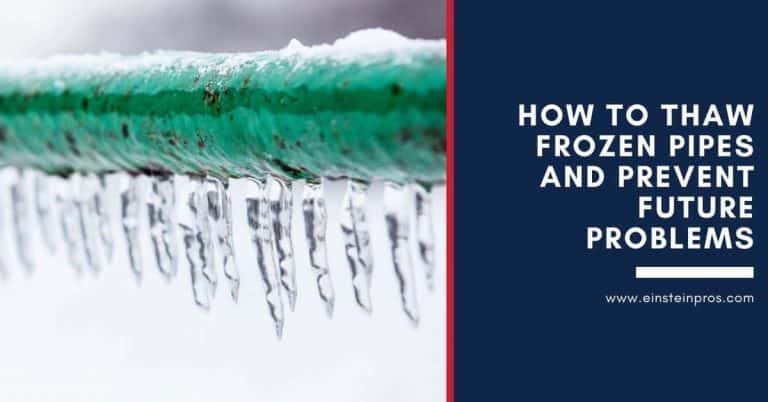If you live in an area where temperatures regularly dip below freezing, you understand the looming specter of frozen pipes. Here are some frozen pipes tips.
We rely on our plumbing system to keep our home or business comfortable. Our water pipes provide you with hot showers, sanitation, and cooking. So what happens when the pipes freeze? Is there any way I can keep them from freezing during a cold winter storm? Our first best action is to call a plumbing and heating professional to thaw the pipes and check for damage. However, there are a few actions you can take on your own to prevent future frozen pipe issues with these frozen pipes tips when a problem occurs.
Frozen Pipes Tips
Preventing Frozen Pipes
There are various ways to lessen the risk of future frozen pipes. These methods may vary in usefulness, depending upon the location of the pipe and amount of exposure. Some simple preventative methods include:
- Cover any exterior faucets to decrease exposure to cold air.
- Open the cabinet doors to allow the heated air from the room to reach pipes inside the cabinet.
- Keep taps in susceptible areas running at a small trickle to lessen the risk of freezing. However, this method can increase your water bill.
- Use heat lamps or space heaters in exposed areas during cold weather, careful not to let them come in contact with anything flammable.
- Use pipe sponge or other insulating material to wrap the pipe.
- Wrap the problem pipe with electrical heat tape in a spiral, avoiding overlap. Plug in during freezing weather, making sure the tape does not come into contact with anything heat-sensitive.
- Remove garden hoses connected to outdoor faucets, hose bibs or sillcocks. If the faucet is not a frost-proof type, turn off the water to the faucet inside the house and drain the outer section of the pipe and faucet.
Unfortunately, there is no easy way to prevent underground pipes from freezing than excavating and adding extra insulation or making sure they are below the property’s frost line.
Identifying and Thawing Frozen Pipes
There are two warnings of a frozen pipe. The first sign is significantly reduced water pressure, often resulting in a trickle of only drops coming from a faucet. A more critical warning is that of water damage caused by a burst pipe. Luckily, locating a frozen pipe and treating it is less stressful than handling the aftermath of burst pipes.
Locating the Frozen Pipe
To decrease the possible location of the frozen pipe, shut off all taps in the house. Test them one at a time and create a note of which ones lack pressure. A single affected valve means the frozen pipe is isolated and more accessible to address.
Widespread problems imply that there is a single pipe frozen near where water enters your home, or there are various affected pipes. Make sure to leave any badly affected areas open to avoid pressure buildup and support in thawing.
Examine the suspected area for pipes that lack insulation or are extra cold to the touch. Pipes contained in cabinets under a sink are also known to freeze faster due to having less exposure to the room’s warmth. If you can’t locate the frozen section or believe there to be multiple sources, you may want to contact our professional plumber.
Call us now to book an appointment in Oregon, Washington and Nevada.
